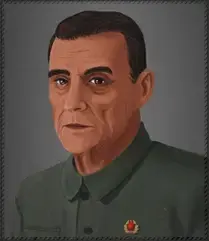It was the Lee Enfield Jungle Carbine (No5) and also the Winchester Model D that got me thinking about this.
This is probably a silly little question, but all of the big WWII long guns (Mosin, Springfield, Enfield etc) have wooden shrouding.handguards that go all the way up over the barrel, right to a few inches before the barrel ends. Given that the British seem to have had trouble sourcing a lot of wood at points during the second world war, I kind of figured this would be the first thing to go in order to expedite production? But you see it on every long gun and lots of the carbines of the time, even the last-ditch stuff.
What function does this serve and why is it not considered necessary on civilian/sporting/hunting rifles?
(Thanks in advance)
Heat protection for the handler is my guess. The nature of a firefight means you may find yourself in unusual shooting positions and you don't want a hot piece of steel pressed up against you if you're lying prone to avoid detection.
Sporting rifles aren't in these life or death situations, so they can afford to skip it.
Maybe it acts as a heat sink for rifles fired repeatedly? I know my Mosin will start to smell like hot cosmoline after a few dozen rounds
Oh that makes a ton of sense, never thought about that!
I do wonder if wood can dissipaate much heat though, lol
Old bolt-action military rifles were meant to be used as spears as well as rifles. Gotta be able to get a good grip on it if you're trying to run somebody through or block some crazy cavalryman's saber swing
Which makes its omission on the No5 kinda weird, but I guess it's too short for real spear duty anyway. Makes sense though given the massive bayonets some of these could mount...
The number 5's whole deal was being lightweight, though. Look at how much lighter it was than a standard enfield:
The No. 5 was about 100 mm (3.9 in) shorter and nearly a kilogram (2.2 lb) lighter than the No. 4 from which it was derived. A number of "lightening cuts" were made to the receiver body and the barrel, the bolt knob drilled out, woodwork cut down to reduce weight and had other new features like a flash suppressor and a rubber buttpad to help absorb the increased recoil and to prevent slippage on the shooter's clothing while aiming.
It was also designed in 1944, apparently. I'm no war historian, but I imagine based on all the other rifles developed around then that bayonet warfare was becoming less and less of a factor - people are using trench brooms and submachineguns in close quarters at that point.
Yes, I was kind of surprised it mounted a bayonet at all. Bayonet warfare was becoming less and less of a factor, but you still see bayonet mounts on stuff as recent as the AK-74? Knife style, granted...
Yeah, bayonet lugs on rifles made after like 1950 seem completely ridiculous. But also a little bit cool for dumb reasons.
Standard sized rifles and unstandard sized shooters with different levels of ability. Being able to grab farther down a barrel to keep it steady is kinda useful.
Having something that can work as "padding" (that won't melt or get shredded off through field use) to reduce the sound of the metal barrel hitting stuff when you're trying to move around quietly.
No matter how scratched up the wooden parts are they shine less than a barrel after the bluing has been scrapped off.
If trying to use a rifle in hand to hand combat, wood might dampen both sound and vibration transferred through to your hands to better keep a hold of it.
... as a few guesses...
Damn there are actually a ton of reasons for this, feels really obvious now.
Ain't that how it always goes? There's this thing that's always there but its its always been there so long that we just stopped seeing it and then one day BAM! you we it and we start wondering why its there...
Universe is pretty cool like that...

i think it's just style. that's just how 1890s rifles looked and those were still the predominant designs being used by ww2. plenty of repeaters & bolt actions before that time didn't bother, plenty afterward haven't. i mean it looks nice so not the worst fad imo.
we'd have to track down ad-copy for like lee enfields to see if they were marketing that touch as necessary protection for its 'super-rapid' fire making the barrel too hot, but this trend only lasting about 50 years indicates to me it was of marginal benefit
not a gun nerd but prolly to reduce weight in sports rifles?
weight defiantly matters, the heavier the gun the harder to keep steady when you're looking down the scope for a while. Lots of modern guns use carbon fiber instead of wood to lower the weight.
Of course, just seems like the little bit for the handguard wouldn't be super heavy. I guess every gram counts?
Yeah an extra 6oz or whatever can really matter. Just hold a glass with your arm fully extended in front of you then do the same thing with the glass full of water, shouldn't take long to notice the difference.
Generally the point of a sporting rifle is to fire one or two shots to bag your dinner. The most the barrel could heat up is during target practice. Compared to combat where you could do a lot more shooting in a short period. My guess.
They’re called Mannlicher stocks if you wanna put one on a gun that doesn’t have it.






